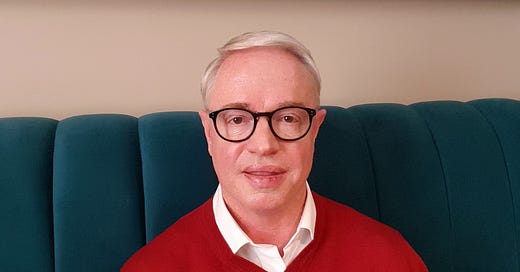If you go to a teaching on shunyata by a Tibetan Buddhist lama, you will often be told that it is a profound subject with many complex implications. That it can be a slippery concept - now you have it, now you don’t. And that it can take some people years to form a resolved understanding of the subject.
All this is true.
At the same time, the basic idea of shunyata is not too hard for us Westerners to understand, given that we have been taught how to think at school.
In this age of soundbites and instant gratification, I also feel it is important to be able to communicate the basics of an idea succinctly. I am sorry that my video is just under 12 minutes. I would have preferred to keep it to under 10.
Focusing on the way things exist, how things exist, can actually be an intriguing novelty. If you haven’t come across this already, you’re in for hours of entertainment as you view all manner of objects and situations through the lens of shunyata!
Importantly, as we begin to understand the implications of shunyata, we become less hung-up about things, because we start recognising that what we deemed so very important - and even who this deemer of importance actually is - are somehow less concrete, inherent, and all-round a big deal than we may have previously believed. We learn to loosen up and let go a little.
Shunyata and nihilism
There have long been warnings not to teach shunyata to those with “unripe minds” lest they fall into a nihilistic way of thinking. That said, our materialist culture in the West could hardly be more brutally nihilistic. The assumption that there is nothing but matter, and when you die, you cease to exist in any shape or form, is the prevailing, unspoken, orthodoxy. The Tibetan Buddhist view is spectacularly more positive than this!
One of the reasons that some Westerners in particular, are confused or spooked by shunyata is, I believe, a translation problem. In my video, I give a few synonyms for shunyata, such as a lack of inherent existence, separate existence or independent existence. I have avoided saying “empty of inherent existence,” which is perhaps the most commonly used phrase. And which is very frequently shortened to “empty.”
In our culture, “empty” and “nothing” mean the same thing. To say that a cupboard is empty, that there is nothing in it, is to repeat oneself. Keep on saying that everything is empty, and it’s hardly surprising that listeners will form an impression of nihilism!
There are other examples. “No soul” is another phrase that puts people at risk of throwing the baby out with the bathwater, so to speak. “No inherently-existent soul” would be a better way of putting it, and leading to the more intriguing question of how, in fact, we define a soul. In many, much-loved Buddhist texts, including The Heart Sutra itself, there are references to “no this” and “no that”, when what is actually intended is no inherently-existent this or that.
Comments, questions and feedback please!
To return to where I started, shunyata is indeed a subtle and profound subject, and this week’s post may prompt many questions. Sometimes these are not easy to articulate! But if you are able to, and you’d like me to try to answer them to the best of my ability, I will certainly try. Please use the Comments box and perhaps I can include these in a Q&A video in a few weeks’ time.
Please feel free to share this post with anyone you feel may find it helpful.





Share this post